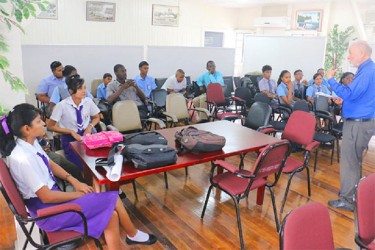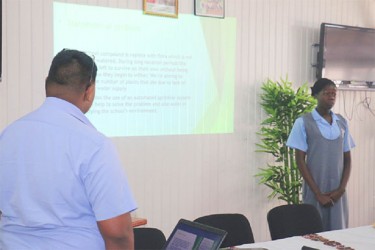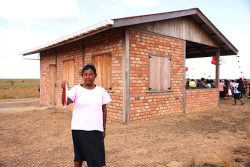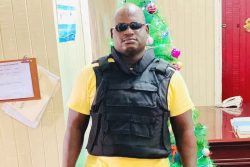Over 70 entrants from various schools around the country and the region will be hoping to come out on top at the finals of the Sagicor Visionaries Challenge competition, which begins today although last year’s winning project still has not gone anywhere.
This year the Ministry of Education in collaboration with the Ministry of Culture, Youth and Sport, the Caribbean Science Foundation and Sagicor Life Inc. has once again made a special effort towards launching the competition. However, national participation was seen from only regions 2, 3, 4, 6 and 9. The finals will be held today and tomorrow at the Cliff Anderson Sports Hall, where the projects will be displayed.
This year’s projects include biological control for Chikungunya, water purification systems, fast food fuel, harnessing rain water, making paper from rice straw, use of piezoelectricity, green spaces for a sustainable future and an automated sprinkler system.
In November, each country hosts a national competition to select its national winning team that will participate in the regional competition in Florida in July 2015 and the Science, Technology, Engineering and Mathema-tics (STEM) Ambassador Programme.
The competition is aimed at secondary/high school and home-schooled students between the ages of 11 and 16, who are encouraged to identify a challenge facing their respective school or school of choice and using science, technology, engi-neering and mathematics in an interdisciplinary and applied approach to find a solution.

National Science Coordinator Petal Punalall-Jetoo said last year’s winner, the Zeeburg Secondary School also entered the competition once again but did not make it to the finals this time around. The school’s winning project from last year saw students using STEM to implement the use of a shrimp dryer to reduce air pollution at their school. Students at the school had told Stabroek News that the school is located next to a seawall where a lot of shrimp drying is done. As a result, they are faced with a pollution problem. They proposed the construction of a shrimp processor to reduce the adverse environmental effects experienced by the school.
After last year’s competition nothing was done to implement the project proposed by those students and to implement a company/business to monitor the situation. Punalall-Jetoo told Stabroek News that although nothing was done, she believes that some company has taken the information in and they might not do anything this year or the next but probably sometime in the future.
She pointed out that after last year’s competition, Guyana Water Incorporated (GWI) went to the St. Ignatius Secon-dary School in Region Nine to follow up on its ‘Self-Sustainable Water’ project that featured the use of solar energy to generate power to take water to the Amerindian communities of the Rupununi.
Punalall-Jetoo said that Sagicor also had a meeting with the private sector in an effort to get a full-scale project going but nothing was done yet and she did not know the reason for the state of affairs. “They may have future plans in store that they are still planning on,” she suggested. She also said that many may not be aware of the problems around the schools but the competition serves as a valuable and worthwhile tool to create great values in sharing and finding a solution to problems.
According to a press release from the Ministry of Education, this year more than 70 entries were recorded and, again, Guyana leads in the number of entries in the region. In 2013, 33 project entries were submitted from Guyana, which resulted in Guyana entering the highest number of projects for its national competition in the Caribbean.
The Caribbean Science Foundation, Sagicor and the Caribbean Examination Council (CXC) worked with Ministries of Education in the region to create the Sagicor Visionaries Challenge, which was launched in high schools across the region.











